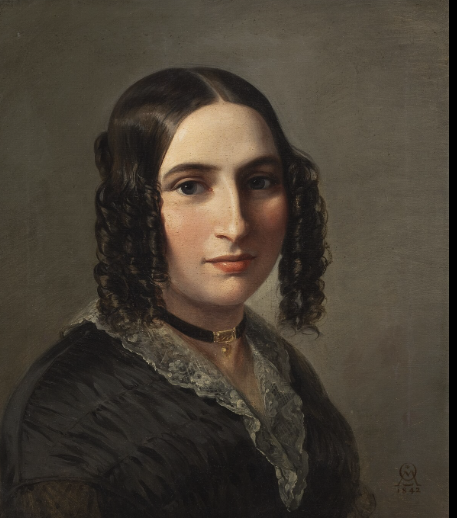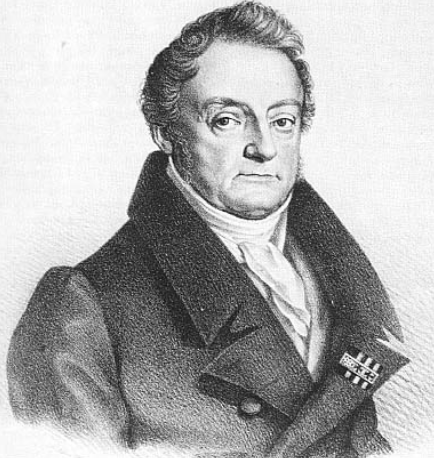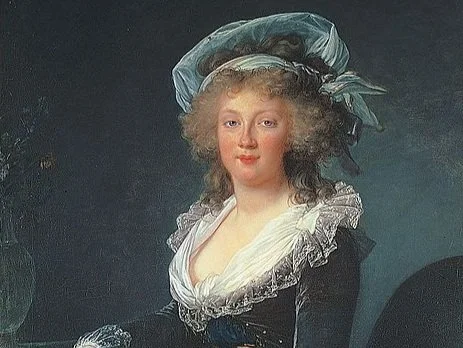Throughout history, many great composers of the Classical and early Romantic eras have been celebrated, yet some remarkable talents remain underappreciated. One such name that deserves more recognition is Fanny Mendelssohn. A gifted composer and pianist, she was a musical prodigy whose talents rivaled those of her famous brother, Felix Mendelssohn. Despite the societal constraints placed on women in the 19th century, Fanny composed over 450 works, including piano pieces, chamber music, and choral compositions. Her contributions to classical music are now gaining the recognition they deserve, shedding light on the extraordinary talent of a composer who was ahead of her time.
When discussing the great composers of the Classical and early Romantic eras, names like Beethoven, Mozart, and Haydn often dominate the conversation. However, one name that deserves more recognition is Ferdinand Ries. A student and close friend of Beethoven, Ries was a prolific composer and a significant figure in his own right. Here are five intriguing facts about Ferdinand Ries and his contributions to the world of music.
Ludwig van Beethoven's Fifth Symphony is one of the most recognisable and celebrated pieces of classical music in the world. Its iconic four-note motif and powerful orchestration have captivated audiences for over two centuries.
Here are five fascinating facts about this legendary symphony.
In the intricate tapestry of 19th-century London's musical scene, William Watts stands as a figure deeply intertwined with its formation, yet he is veiled in the shadows of history with little information about him having been recorded. Despite this, the preservation of his arrangements of Beethoven’s symphonies speaks volumes today, reflecting his profound understanding and appreciation of Beethoven’s compositions. Watts's adaptations are notable for their respectful treatment of the original works, faithfully preserving Beethoven’s intentions and musical essence.
The London symphony is the last of the twelve which Haydn wrote for London audiences. In Germany, it is better known as the "Salomon" symphony, in honour of that famous impresario. However, Symphony No. 104 was first performed in the context of the famous Giovanni Battista Viotti's Opera Concerts, not in Salomon's concert series.
Haydn wrote the three 'Times of Day' symphonies (Le Matin, Le Midi and Le Soir) in 1761 when he first arrived to work for the Esterházy family. The prince requested that Haydn write works on the times of day theme, and it is thought that Haydn took this opportunity to win the favour of the resident musicians by including solos for various instruments throughout.
It was long believed that the nickname La passione or ‘The Passion’ was derived from the nature of the music itself: the slow opening movement and its minor key modality in the context of Haydn’s ‘Sturm und Drang’ output which pointed to a serious, possibly sacred, subject.
In the pantheon of great composers, Ludwig van Beethoven stands as a towering figure whose works continue to resonate with audiences worldwide. Behind his prodigious talent and enduring legacy, there were several patrons who recognised his genius and provided the support necessary for his development. Among these patrons, Count Ferdinand von Waldstein holds a special place. His early encouragement and patronage of Beethoven were instrumental in shaping the career of one of music's greatest luminaries.
Haydn wrote two versions of this stunning mass and both have a connection to the pilgrimage Mariazell shrine in Styria (Austria). He marks both works with ‘Zell’ - meaning 'for Mariazell'. The first version was penned in 1766 and the second in 1782. The first version of the work is known as Missa cellensis, Hob. XXII:5, the full title is Missa cellensis in honorem Beatissimae Virginis Mariae (Zell Mass in honour of the most Blessed Virgin Mary) but it is also known as the Cäcilien-Messe.
Among the influential patrons who supported the genius of Ludwig van Beethoven, Count Andreas Kyrillovich Razumovsky stands out as a significant figure. His patronage not only provided Beethoven with the financial means and artistic encouragement necessary for his creative endeavors but also played a crucial role in the composition of some of the composer’s most profound works. The relationship between Count Razumovsky and Beethoven exemplifies the importance of patronage in the development of classical music.
In the rich tapestry of classical music history, the patronage of Prince Esterházy stands out as one of the most significant relationships between a noble patron and a composer. This unique partnership between Prince Nikolaus Esterházy and Joseph Haydn, often referred to as the "Father of the Symphony," played a crucial role in shaping the course of Western music. The support and opportunities provided by the Esterházy family enabled Haydn to reach unprecedented heights in his career, leading to the creation of some of his most celebrated works.
Joseph Haydn's Keyboard Concerto No. 11 in D major was written between 1780 and 1783, and published in 1784. It was originally composed for harpsichord or fortepiano and scored for an orchestra in a relatively undeveloped galant style characteristic of Haydn’s early works, and has a lively Hungarian Rondo finale. It also displays some similarities to Mozart's piano concertos reflective of a later style.
In 1795 Haydn composed a set of three piano trios. The no. 39 in G Major, the second in the set, has come to be one of his most well-known works of the genre. It is sometimes nicknamed the "Gypsy" because of its Rondo finale in 'Hungarian' style.
Among the many patrons who played crucial roles in the life and career of Ludwig van Beethoven, Prince Franz Joseph Maximilian von Lobkowitz stands out as one of the most significant. His unwavering support and dedication to Beethoven’s music provided the composer with the means to explore new artistic frontiers and produce some of his most celebrated works. The relationship between Prince Lobkowitz and Beethoven highlights the essential role of patronage in the flourishing of artistic genius.
In the vibrant musical landscape of late 18th-century Vienna, one patron stands out for his extraordinary influence and support of three of the greatest composers of all time: Joseph Haydn, Wolfgang Amadeus Mozart, and Ludwig van Beethoven. Baron Gottfried van Swieten, a diplomat, librarian, and music enthusiast, played a pivotal role in fostering the careers of these musical giants. His patronage not only provided them with financial and moral support but also helped shape the course of Western classical music.
In the annals of music history, few relationships between a royal patron and a composer have been as fruitful and significant as that between Queen Maria Therese and Joseph Haydn. The late 18th century was a period of great cultural and musical flourishing, and at the heart of this era was the Austrian court, where Maria Therese played a pivotal role in nurturing the arts. Her support and patronage of Joseph Haydn, one of the greatest composers of the classical era, not only elevated his career but also enriched the musical landscape of the time.
The Op. 33 String Quartets were written in the summer and autumn of 1781 for the Viennese publisher Artaria. This opus has the nickname the "Russian" quartets, because Haydn dedicated the quartets to the Grand Duke Paul of Russia. Other quartets in the opus have their own nicknames, but this first quartet does not, yet it is a stunningly beautiful work.
The Cello Concerto No. 1 in C major, by Joseph Haydn was composed around 1761-65 for longtime friend Joseph Franz Weigl, then the principal cellist of Prince Nicolaus's Esterházy Orchestra.
This incredible oratorio was written between 1797 and 1798. Haydn depicts the creation of the world, as told in Genesis. It also draws from the Psalms and Milton’s work Paradise Lost. It is truly one of his most moving and uplifting works.
The oratorio as a musical form was first developed in seventeenth-century Italy. Handel later transformed the form into a more extended and powerful choral music-drama that became extremely popular in eighteenth and nineteenth-century England. It is thought that Haydn was inspired by hearing works such as Handel’s Israel in Egypt when he visited London.
Haydn’s Op. 76 string quartets were written later in his life, between 1797-1798. They were composed while he was still in the employ of the Esterházys and also while he was composing the Creation. The famous music historian, Charles Burney, wrote that he "had never received more pleasure from instrumental music", describing the Op. 76 as "full of invention, fire, good taste and new effects".
The Seven Last Words of Our Saviour on the Cross is an unusual orchestral work that was commissioned in 1786 for the Oratorio de la Santa Cueva (Holy Cave Oratory) in Cadiz for the Good Friday Service that year. The following year it was published in a number of other versions including a choral arrangement as well as for string quartet.
Haydn wrote his Theresienmesse in B flat major for the name day of Princess Esterházy in the summer of 1799 and it was first performed in the Bergkirche at Eisenstadt. On that day there was said to have been a banquet at which the Prince drank to Haydn’s health. Rosenbaum (a former secretary of the Esterházy family) noted in his diary that there was also Turkish music performed in the square followed by the performance of a French play.
Among the numerous patrons who recognized and nurtured the genius of Ludwig van Beethoven, Prince Andrey Kirillovich Razumovsky Galitzin holds a special place. His support and patronage during the later years of Beethoven's career were pivotal in the creation of some of the composer's most profound and innovative works. The relationship between Prince Galitzin and Beethoven is a testament to the transformative power of enlightened patronage in the world of classical music.
























Franz Schubert’s Lieder are some of the most expressive in classical music. With over 600 songs to his name, Schubert transformed the art song into a powerful medium of emotional storytelling, blending poetry and music with unmatched sensitivity and depth.
Here are five fascinating facts about this remarkable body of work.